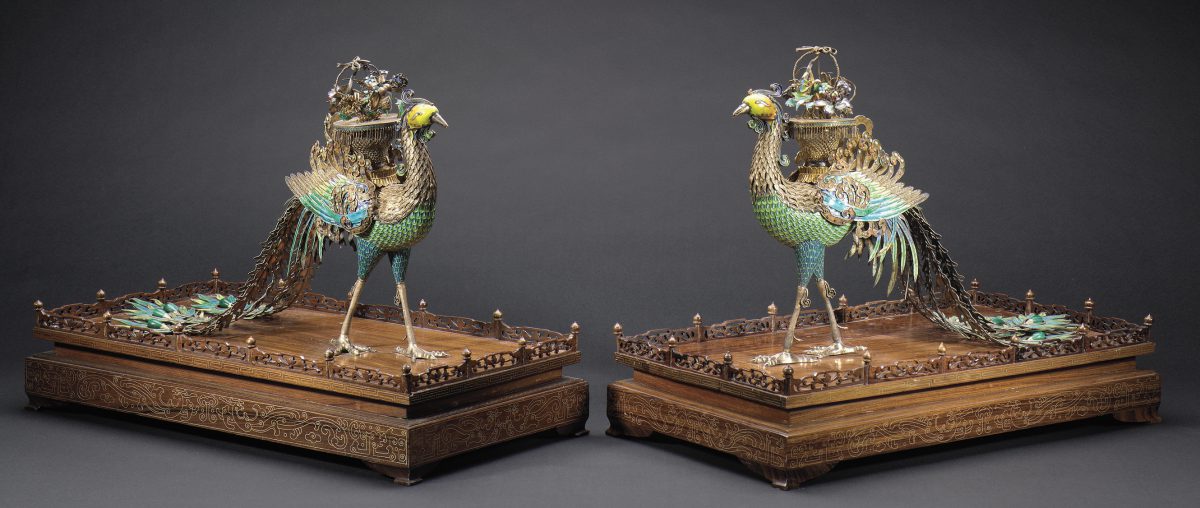



Title: Pair of Phoenixes
Date: 1736-1795
Location: China, probably Beijing
Materials: silver-gilt, filigree enamel, malachite and turquoise; the wood stands inlaid with silver wire
Dimensions: bird height 31 cm ; base 11.2 x 51.4 x 28 cm
Accession Number: CH 761
Other Notes:
Gold filigree was frequently used in China for jewellery, most particularly for hair ornaments. It was also adopted by the palace workshops in Beijing as an additional decorative element in their interpretations of European timepieces.
In Guangzhou silver filigree decoration was used for a range of objects destined for the export market. As well as functional objects such as boxes and candlesticks – their shapes based on European models – more fanciful and fragile pieces were made. Of this category one of the most spectacular surviving examples is the pair of table ornaments, formed as a peacock and peahen standing amid rocks and trees, part of a toilet set belonging to Catherine II ‘the Great’, Empress of Russia. Instead of enamel being used to highlight the feathers, as seen on this pair of phoenixes, the peacocks have painted plumes – a less expensive and less risky alternative. The opulence of the present pair was further emphasized by the gilt filigree being set with coloured hardstones.
The phoenix (fenghuang), emblem of the empress, was the counterpart of the dragon, the emperor’s emblem. The bird was charged with auspicious associations including prosperity, charity and beauty.
Bibliography:
Haydn Williams, Enamels of the World: 1700-2000 The Khalili Collections, London 2009, cat. 69, p. 125.
Zoom
Close

Create your own collection of artworks that you can print or save as a PDF. Please enter you email to enable feature.
Small Flask | JLY 1075
Has been added to your collection.
TIP:
You can now access and view your collection from the main menu at any time.